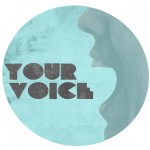Last week I attended a Ministry session and had the pleasure of joining a table with two deaf educators and their ASL interpreters. I was in awe of the brevity of the signs and how those hand gestures translated into such well-defined lengthy responses. It quickly became apparent which ideas were being emphasized as the educator’s movements became more demonstrative, with the occasional banging to the chest or on the table. Respectfully engaging in a conversation with a hard of hearing or deaf person requires one to watch the “speaker”, but listen to the interpreter. As a society, we naturally look at the person speaking to us, but not in this case. So it took a while to get a rhythm going, but the more I watched and listened the more impressed I was.
As the session continued, our collective conversation focused on challenges with Literacy instruction, both at the student desk and when it comes to supporting educator learning. This teacher started to share her frustration when teachers for the deaf/hard of hearing rush to sign for the students instead of letting them figure it out on their own, especially when it comes to demonstrating evidence of their learning in a written form. She wondered how much of the teacher’s input was being reflected in student work. Although her teaching assignment is unique, in that the teacher’s role includes the added dimension of signing, the challenge of knowing when support translates into changing the message is a common one.
I remember a story that a friend shared about her daughter and a story that she had written. The teacher mistakenly thought that her daughter has misspelled the character’s name and proceeded to change it throughout the story and send it off to the “publisher” in that form. Although this example is a minor one, it was a significant “faux pas” in the eyes of the student. To her, the name and how it was spelled had a special meaning and the teacher had changed it.
I wonder how we ensure that we are honouring student voice and not impacting or changing it by imposing our thoughts and ideas. That is always one of the challenges when we model any skill for our students. What conditions need to be in place to ensure that our students’ authentic voices (in whatever form they use ~ words or signs) are reflected in their work?
Come write with me….


